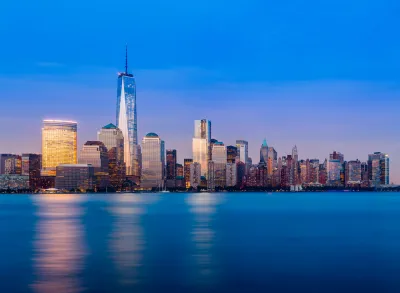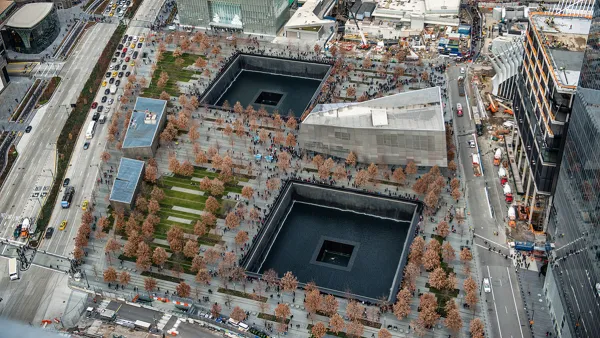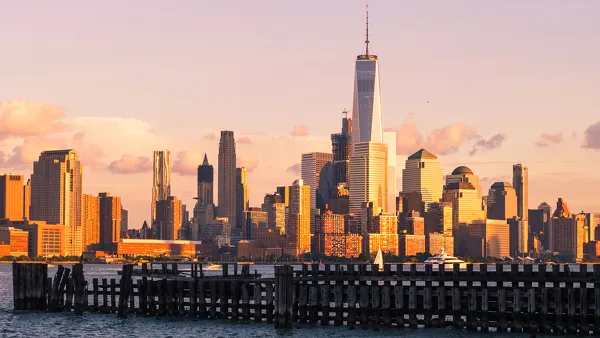Despite predictions that the events of September 11, 2001 would be the end of skyscrapers, U.S. cities are building more tall buildings than ever.

In the days following 9/11, "[a] Chicago developer told Chicago Tribune architecture critic Blair Kamin that American cities shouldn’t allow new skyscrapers that could 'be viewed as a magnet for future terrorism,'" and Americans wondered whether they would ever feel safe in tall towers again. Yet since 2001, "a dozen towers have gone up in Chicago that top 700 feet," writes John King, and other cities are seeing similar rates of construction.
According to Carol Willis, director and curator of the Skyscraper Museum in New York, "there are strong forces that cause towers to grow when there are good economic conditions. They’re weeds." As the rebuilt towers went up in place of the fallen World Trade Center, "[p]eople were reminded that tall buildings can express the spirit and potential of large cities." Today, the area surrounding Ground Zero "is ringed with towers that include the 1,776-foot One World Trade Center, the nation’s tallest building."
"In terms of a city’s daily life, the best towers are the ones that give something to the public. They’re approachable, with shops and cafes and nooks that are open to people who never enter the high-rise lobby." In San Francisco, says King, "when you walk along Folsom Street, or cut through landscaped mid-block plazas that didn’t exist before, the skyline show is secondary to the pedestrian environment slowly starting to emerge." According to Brian Lee, a consulting partner at Skidmore Owings & Merrill in Chicago, "[b]uildings should be meaningful for your time. If it’s just arbitrary shaping, that’s super-disappointing."
FULL STORY: 9/11 was supposed to end the age of skyscrapers. Instead, there are more now than ever

National Parks Layoffs Will Cause Communities to Lose Billions
Thousands of essential park workers were laid off this week, just before the busy spring break season.

Retro-silient?: America’s First “Eco-burb,” The Woodlands Turns 50
A master-planned community north of Houston offers lessons on green infrastructure and resilient design, but falls short of its founder’s lofty affordability and walkability goals.

Delivering for America Plan Will Downgrade Mail Service in at Least 49.5 Percent of Zip Codes
Republican and Democrat lawmakers criticize the plan for its disproportionate negative impact on rural communities.

Test News Post 1
This is a summary

Test News Headline 46
Test for the image on the front page.

Balancing Bombs and Butterflies: How the National Guard Protects a Rare Species
The National Guard at Fort Indiantown Gap uses GIS technology and land management strategies to balance military training with conservation efforts, ensuring the survival of the rare eastern regal fritillary butterfly.
Urban Design for Planners 1: Software Tools
This six-course series explores essential urban design concepts using open source software and equips planners with the tools they need to participate fully in the urban design process.
Planning for Universal Design
Learn the tools for implementing Universal Design in planning regulations.
EMC Planning Group, Inc.
Planetizen
Planetizen
Mpact (formerly Rail~Volution)
Great Falls Development Authority, Inc.
HUDs Office of Policy Development and Research
NYU Wagner Graduate School of Public Service




























